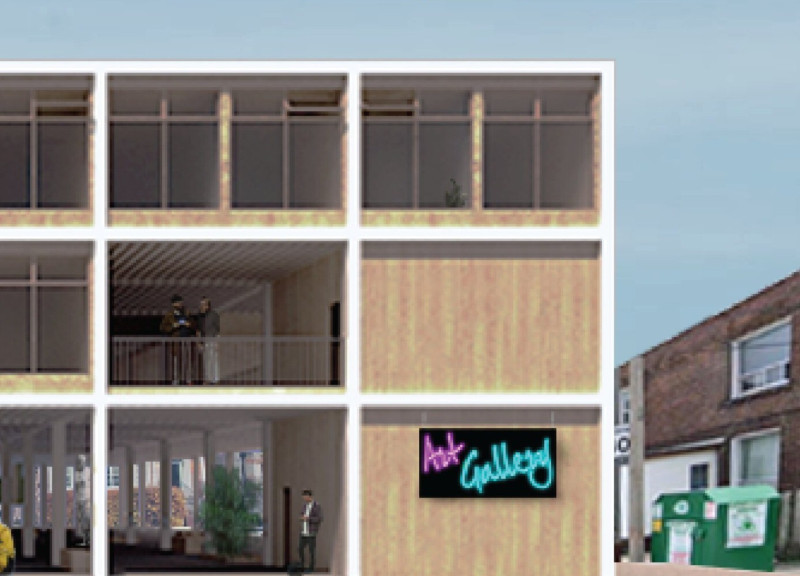5 key facts about this project
The primary function of the Hub House is to provide not only affordable housing solutions but also diverse communal spaces that encourage interaction among residents. The design includes a range of living options such as studio units and two-bedroom apartments, ensuring that it caters to different demographics within the community. The integration of public amenities, like performance spaces and communal gathering areas, enhances the livability of the project, transforming it from merely a residential building into a vibrant part of the urban fabric.
The architectural design of the Hub House features distinct components that collectively contribute to its overarching vision. The layout is strategically organized to differentiate public and private spaces while maintaining a continuous flow that promotes accessibility. The careful arrangement of these areas encourages connections among residents, creating opportunities for collaboration and shared experiences.
One noteworthy aspect of the Hub House is its innovative approach to spatial configuration. The use of various design frameworks—identified as Fortress, Barrier, and Negative Space—highlights the project’s adaptability and responsiveness to the surrounding urban context. The Fortress framework contributes to the structural integrity of the building while being visually appealing. The Barrier framework allows the project to integrate seamlessly with existing surroundings, promoting a sense of continuity within the neighborhood. Negative Space maximizes open areas, providing residents with essential outdoor spaces that encourage recreational activities.
Material selection in the Hub House also plays a vital role in its design narrative. The project emphasizes the use of sustainable and locally sourced materials, which not only reduce environmental impact but also create a connection between the building and its surrounding context. Key materials include wood, steel, glass, and concrete. These materials are chosen not only for their aesthetic qualities but also for their practical benefits, ensuring durability and enhancing the overall wellbeing of residents.
Through the incorporation of abundant natural light via expansive glass elements, the design champions a sense of openness and connectivity. This approach also aids in reducing energy consumption while providing an inviting atmosphere. The use of wood adds warmth to the interior spaces, while steel offers structural support that aligns with modern construction practices. Concrete, chosen for its stability, provides a solid foundation and helps keep the project visually cohesive.
The unique design strategies employed in the Hub House are particularly evident in the creation of multifunctional spaces. By designing areas that can serve multiple purposes—such as markets, art exhibitions, and leisure activities—the project transcends traditional residential layouts. The potential for seasonal adaptability, where spaces can change function according to community needs, reflects a forward-thinking approach in architectural design.
Engagement with nature is another hallmark of the Hub House, with terraces and communal gardens incorporated throughout the project. These green spaces serve as vital areas for relaxation and socialization, further enhancing the quality of life for residents. The thoughtful design fosters an environment where residents can interact not only with one another but also with their natural surroundings.
Ultimately, the Hub House stands as a model of architectural design that prioritizes community wellbeing, sustainability, and functionality. Its innovative integration of housing with public amenities makes it a valuable addition to the urban landscape of Toronto. For those interested in delving deeper into this project, exploring the architectural plans, sections, and specific design elements will provide comprehensive insights into the thoughtful considerations that define this intriguing housing solution. The Hub House not only exemplifies effective urban living but also invites further exploration into architectural ideas that can shape the future of communal living spaces.























